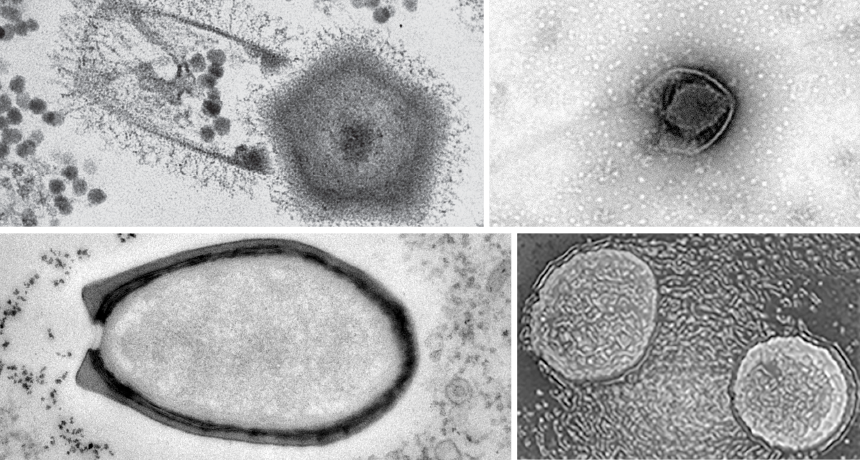Meet the giants among viruses

For decades, the name “virus” meant small and simple. Not anymore. Meet the giants.
Today, scientists are finding ever bigger viruses that pack impressive amounts of genetic material. The era of the giant virus began in 2003 with the discovery of the first Mimivirus (SN: 5/23/09, p. 9). The viral titan is about 750 nanometers across with a genetic pantry boasting around 1.2 million base pairs of DNA, the information-toting bits often represented with A, T, C and G. Influenza A, for example, is roughly 100 nanometers across with only about 13,500 base pairs of genetic material.
In 2009, another giant virus called Marseillevirus was identified. It is different enough from mimiviruses to earn its own family. Since 2013, mega-sized viruses falling into another eight potential virus families have been found, showcasing a long-unexplored viral diversity, researchers reported last year in Annual Review of Virology and in January in Frontiers in Microbiology.
Giant viruses mostly come in two shapes: polyhedral capsules and egglike ovals. But one, Mollivirus, skews more spherical. Pacmanvirus was named for the broken appearance of its outer shell. Both represent potential families. Two newly discovered members of the mimivirus family, both called tupanviruses and both with tails, have the most complete set of genes related to assembling proteins yet seen in viruses (SN Online: 2/27/18). Once unheard of, giant viruses may be common in water and soils worldwide. Only time — and more discoveries — will tell.
Virus length and genome size for a representative from each of two recognized giant virus families (mimivirus and marseillevirus families) and eight potential families are shown. Circles are scaled to genome size and shaded by size range, with influenza A and E. coli bacterium included for comparison. Years indicate when the first viruses were described.
Graphic: C. Chang; Sources: P. Colson, B. La Scola and D. Raoult/Annual Review of Virology 2017; J. Andreani et al/Frontiers in Microbiology 2018